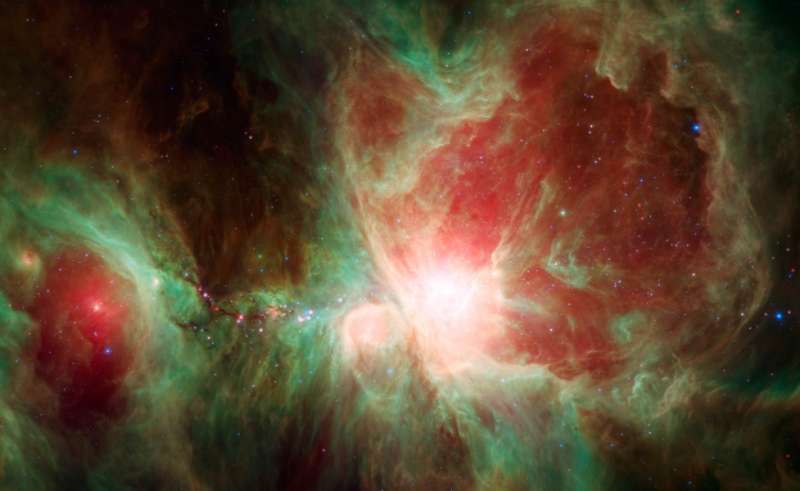
|
Credit & Copyright: NASA,
JPL-Caltech,
T. Megeath (Univ. Toledo, Ohio)
Explanation:
Few cosmic vistas excite the imagination like
the Orion Nebula,
an immense stellar nursery some 1,500 light-years away.
This stunning false-color
view spans about 40 light-years across the region,
constructed using
infrared data
from the Spitzer Space Telescope.
Compared to its
visual wavelength appearance,
the brightest portion of
the nebula is likewise centered on Orion's young, massive, hot stars,
known as the Trapezium Cluster.
But the infrared image also detects the nebula's many protostars, still
in the process of formation, seen here in red hues.
In fact, red spots along the dark dusty filament to the left
of the bright cluster include the protostar cataloged as HOPS 68,
recently
found to have
crystals of the silicate mineral olivine within its
protostellar envelope.
|
January February March April May June July August September October November December |
| ||||||||||||||||||||||||||||||||||||||||||||||||
NASA Web Site Statements, Warnings, and Disclaimers
NASA Official: Jay Norris. Specific rights apply.
A service of: LHEA at NASA / GSFC
& Michigan Tech. U.
Based on Astronomy Picture
Of the Day
Publications with keywords: Orion Nebula - infrared
Publications with words: Orion Nebula - infrared
See also:
- Orion and the Running Man
- APOD: 2025 August 13 Á Trapezium: In the Heart of Orion
- APOD: 2025 April 20 Á The Orion Nebula in Visible and Infrared
- APOD: 2025 February 23 Á Saturn in Infrared from Cassini
- APOD: 2024 November 4 Á M42: The Great Nebula in Orion
- APOD: 2024 September 10 Á Horsehead and Orion Nebulas
- Trapezium: At the Heart of Orion
